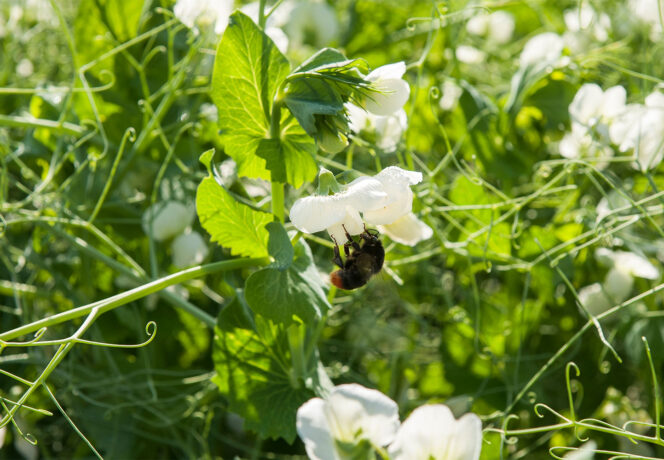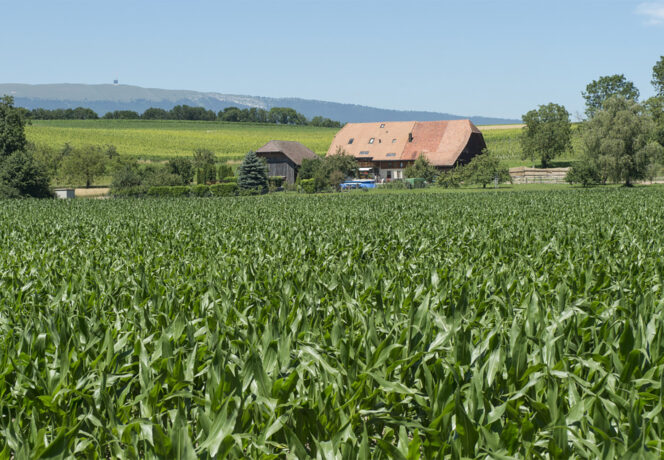
Archive
2,561 posts




Beekeeping and farming – dependence and contradiction
In many countries of the northern hemisphere, populations of honey bees and other pollinating insects have been in decline for some years. The causes of this decline have not yet fully been clarified. There are, however, strong indications that intensive agriculture can impact pollinators negatively. Many agricultural activities affect pollinating insects and thus affect the…

Potential of whey as a food constituent in Switzerland
Each year, 1 300 000 tons of whey occur in Switzerland as a by-product of cheesemaking: 24 % is used in the food industry, 31 % is transformed into high-value animal feed and 45 % is fed directly to pigs. Increasing the percentage made into foodstuffs would be desirable but is difficult to realize because…

Life-cycle assessment of Swiss agricultural products compared with imports
In light of the growing dynamics of the trade in agricultural products, the environmental competitiveness of Swiss foods vis-à-vis imports is gaining in importance. Agroscope studied the environmental impacts of wheat bread, feed barley, table potatoes, cheese and beef from both Switzerland and major importing countries. Cheese and potatoes from Switzerland were rated as similar…

Potato: the Pectobacterium Empire strikes back
Blackleg disease on potato is caused by several pectinolytic bacterial species and subspecies. Until 2012, most of the blackleg-diseased plants observed in Switzerland were infected with species belonging to the genus Dickeya. During 2013, two other species were found to be responsible for several blackleg infections: Pectobacterium wasabiae and Pectobacterium carotovorum subsp. brasiliense. The former…
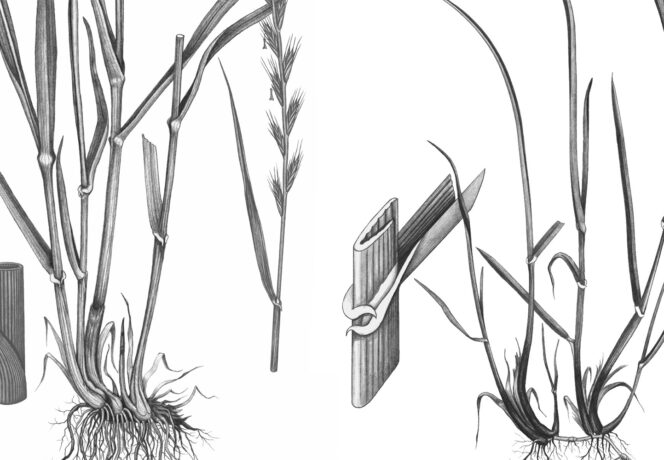
Testing Italian ryegrass: the acid test for 37 varieties
In 2012 to 2014, Agroscope tested 18 diploid and 19 tetraploid varieties of Italian ryegrass at five sites in terms of their suitability for cultivation; four of the diploid and eight of the tetraploid varieties had already been recommended, and were retested. Yield, vigour, juvenile development, competitive ability, persistence, winter-hardiness, resistance to leaf diseases and…

Factors causing variable seed quality in rye and triticale
In seed production of rye kernels frequently do not meet the minimum requirements for germination under laboratory conditions due to mechanical seed deterioration, preharvest sprouting and heavy infection with snow mold. Some triticale lots contain too many foreign cereal grains because triticale often follows wheat in the rotation. Additionally, snow mold infection causes abnormal seedling…


Reconfiguring the agricultural knowledge system in Switzerland
The Agricultural Knowledge System (AKS) in Europe has been, and often continues to be, characterised by the idea of linear knowledge transfer from science to farmers. Particularly in Switzerland, new structures have arisen as a result of the turnaround in agricultural policy and the introduction at the end of the twentieth century of cross-compliance between…

Ramularia collo-cygni, a new pathogenic fungus of barley
Leaf spot constitutes a threat to barley cultivation, leading to significant quantitative and qualitative yield losses. Although these symptoms can be due to physiological stress, they are primarily caused by infestation with the Ramularia collo-cygni fungus. In the absence of sporulation, these two types of leaf necrosis are practically impossible to tell apart. In order…

Grades or labels? Beef prices and quality
The difference between quality grades and quality labels is that the latter are awarded on the basis of production processes, whilst the former are conferred on the strength of the actual production results. In the course of a de-ideologisation of society, it might be assumed that the price differences between quality grades would grow larger…

How strongly does the exchange rate influence Swiss agri-food exports?
In the last few years, and since the abolition of the minimum exchange rate by the Swiss National Bank in January 2015, the Swiss franc has appreciated strongly against all currencies of Switzerland’s most important trading partners. With the help of empirical models, we analyse how strongly aggregate exports of the agri-food sector react to…

Results-oriented approach to biodiversity promotion: acceptance among Swiss mountain farmers
To conserve and enhance biodiversity in agricultural areas, the Swiss Confederation uses two different approaches that support biodiversity enhancement areas (Biodiversitäts-Förderflächen, BFF). The action-oriented approach (Massnahmen-orientierter Ansatz, MOA) compensates farmers for prescribed management measures, whereas the result-oriented approach (Resultat-orientierter Ansatz, ROA) compensates farmers for proven ecological results. This second approach, which in the Swiss Ordinance…

Physiology of the potato varieties and consequences for the grower
The physiology of the potato tuber is characterized by two consecutive periods: the dormancy and the incubation. During the dormancy period, the tuber is under vegetative rest and is unable to sprout. The incubation period begins at sprouting and ends when the first progeny tuber appears on the stolons. The duration of both periods varies…

Crop-specific copper applications by Swiss organic farmers
There are currently quantitative restrictions on the use of copper-based fungicides. In Switzerland, restrictions are imposed on organic farmers by the licensing authority for pesticides, the Swiss Organic Farming Ordinance and the Bio Suisse Standards. The maximum permitted quantities are 1.5 kg/ ha/a in pome fruit, 2 kg/ha/a in soft fruit and 4 kg/ha/a in…

Quality of whole-crop silage from triticale, oats and forage peas
Experiments with various mixtures containing triticale, oats and forage peas were carried out at Agroscope Posieux in 2012 and 2013. The crops were harvested on two dates, chopped, and ensiled in laboratory silos. In addition, the influence of a chemical silage additive on lactic acid fermentation as well as the aerobic stability was studied for…

Digestibility and degradability of silages from whole-plant pea–cereal mixtures
Requiring few inputs, protein plant–immature cereal mixtures can guarantee forage stocks in times of shortage. In order to test whether and how the principle of additivity predicts nutritional value, we conducted in vivo digestibility tests and in sacco degradability tests (crude protein degradability, CPD) to evaluate silages from two mixtures with different protein-plant (i.e., pea)…

The role of the Franches-Montagnes on the Swiss horse market
Like many other local breeds of European origin, the Franches-Montagnes (FM) must fight against a fall in population and number of births, as well as a lack of profitability at the production level. As part of preparing a strategy report for preserving the FM breed, Agroscope Swiss National Stud Farm SNSF investigated the market compliance…



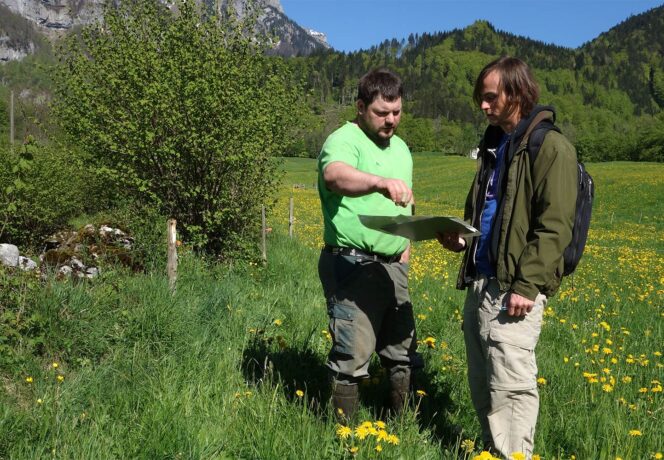
Farmers' and experts' attitudes towards the new agricultural policy
The new Swiss Agricultural Policy 2014–2017 (AP 14–17) is designed to better compensate farmers for their production of common goods such as ecosystem services. We investigated the attitudes of Swiss farmers towards this new political measure and towards the trend of the increasing ecological performance of agriculture. In addition, we studied the expectations of farmers…

Instruments for on-farm animal welfare assessments in beef production
Maximum animal welfare is a core concern in organic farming. With a view to improving animal welfare and making further progress in meeting animal welfare requirements, German and British organic farming associations have developed on-farm animal welfare assessment instruments. These instruments can be applied by the farmers themselves and in the context of organic inspections.…
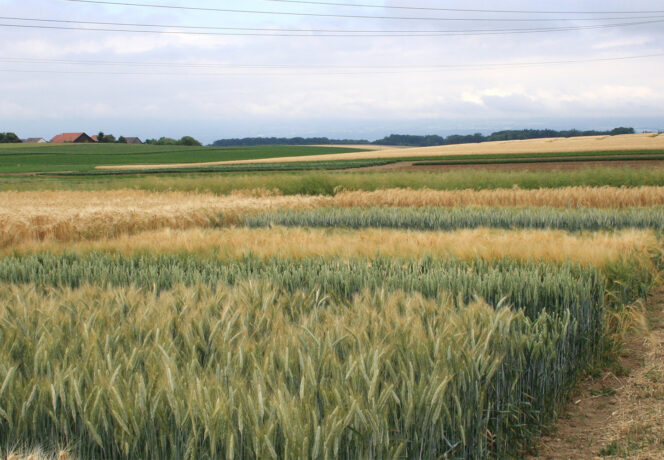
Effects of variety and environment on wheat viscosity
Wheat viscosity is a qualitative characteristic of cereals. Certain studies indicate positive effects for human health linked to high viscosity, such as the lowering of cholesterol or a reduction in cancer risks. Where the feeding of livestock is concerned, however – especially monogastric animals – low levels of viscosity are desirable. In fact, among other…

Evaluation of two methods for optimising nitrogen fertilisation of field crops
Two methods are used in Switzerland to optimise the nitrogen fertilisation of field crops: the «corrected norms» method and the Nmin method. Each of the methods suggests a different approach: the «corrected norms» method takes into account field characteristics influencing nitrogen availability, while the Nmin method is based on the measurement of mineral nitrogen present…

